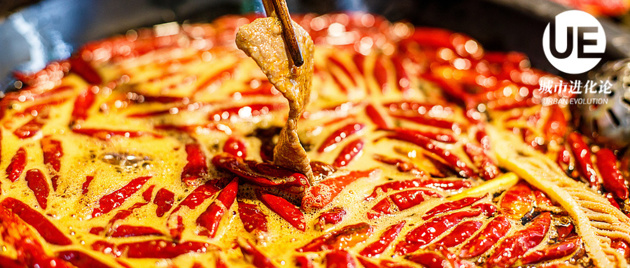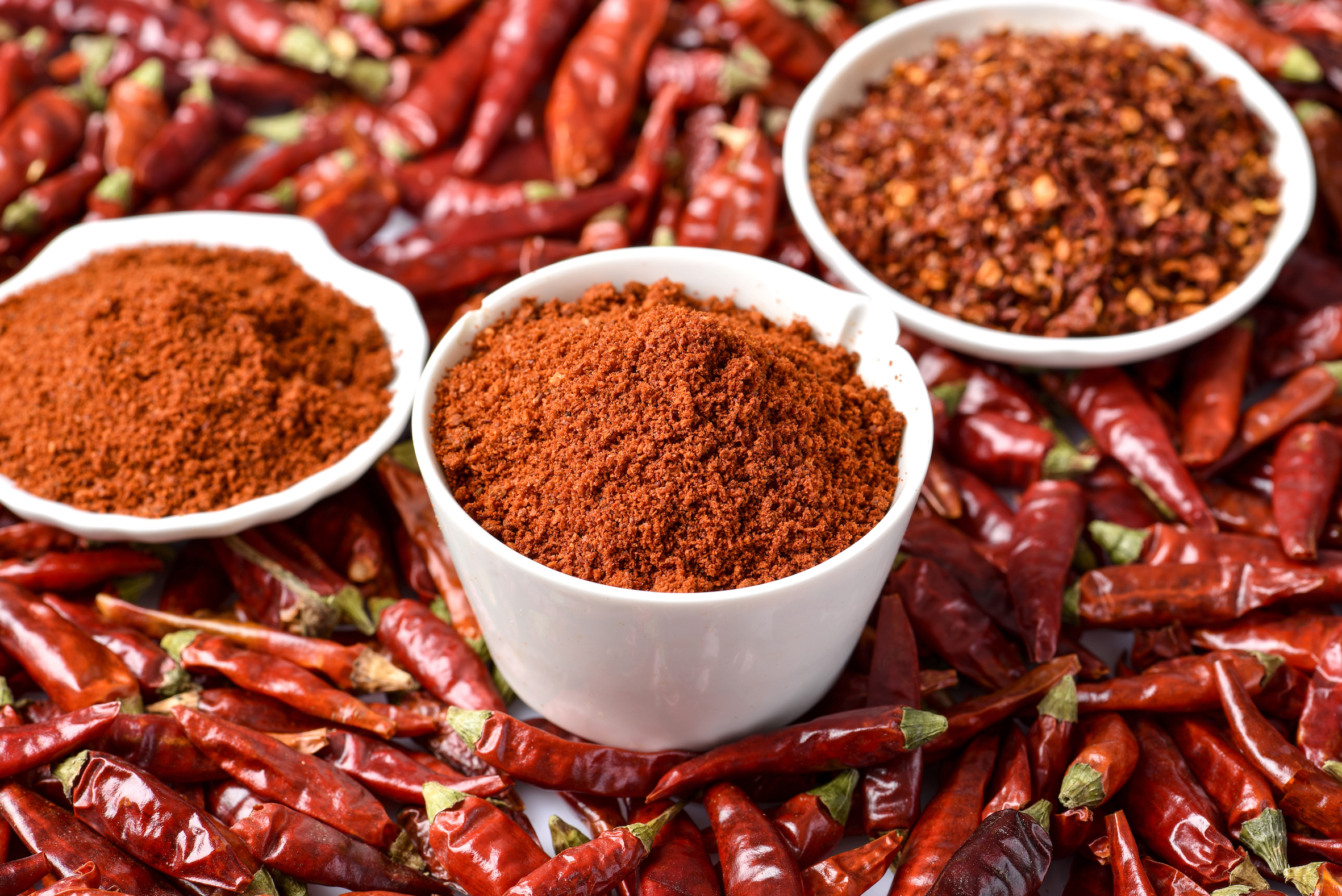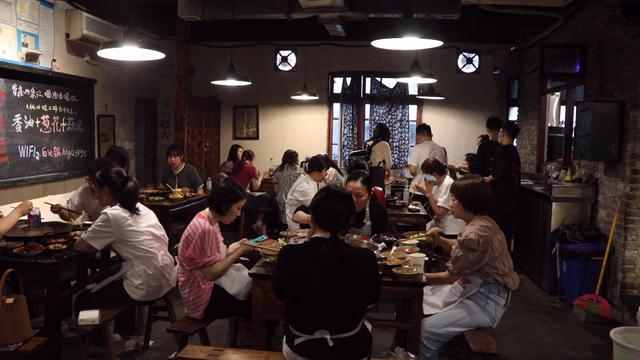The Chinese are slowly quitting the "heavy taste"?
Author:Daily Economic News Time:2022.07.31

Picture source: Photo Network 500552184
Some people say that the Chinese are slowly quitting the "heavy taste", which refers to "spicy taste" here.
The most intuitive manifestation is that whether in the hot pot restaurant or the Sichuan restaurant, the clerk as asked "What taste?" The person present will look at it for ten or nine, silently, looking forward to spitting out the other person's mouth, which is equal to " Two words of "advice": slightly spicy.
In the past thirty or forty years, one of the important changes in Chinese diet and even the entire culture is that people have begun to become "heavy taste". It is even regarded as a social terminal of contemporary people without eating spicy food.
Statistics show that China's spicy population has exceeded 650 million, but in fact, peppers are imported. From South America, the history of peppers can be traced back to 400 years in China-- 400 years-
In the first century, peppers were only used as viewing and have not yet eaten. In the following two hundred years, edible peppers have been widely spread in China, forming a "traditional spicy area" we have now cognitive. From the fourth century to the present, the country has begun to usher in spicy food.
Cao Yu is from Guangzhou, Guangdong. A few years ago, as an associate researcher at the Immigration and Ethnic Research Center of Sun Yat -sen University, he found that the locals were very spicy when they visited the ethnic minority ethnic groups in South China and Southwest Shan District in a field survey, which aroused him Strong curiosity. In this way, it took five years to write this "History of Chinese Food Spicy".

Author: Cao Yu Publishing House: Beijing United Publishing Company
In May this year, the book was released in a new version. "Large -scale immigration groups are bound to bring significant changes in taste, and the taste of huge regional cities in the original difference is being quickly unified." The book pointed out that the taste that dominates nationwide at this stage is spicy.
However, the trend of spicy food may face the fading. In Cao Yu's view, the commercial format of spicy food has almost reached its peak, and it will slowly weaken. "The age range of spicy food is almost 20 to 40 years old. When people are old, they will slowly reduce spicy food. Although there are still young people to supplement the city, the amount of immigrants is unlikely to have a large scale. "
01
The Chinese civilization has been in the past five thousand years, and the time for pepper to enter China is only more than 400 years, but this does not prevent it from attacking the city quickly. Nowadays, China's pepper production is the first in the world.
How did peppers pass to China? From the origin of the name of peppers, "History of Chinese Food", in the southwest, peppers are also called "sea peppers". This name implies the path of spreading peppers in China -
The southeast coast of China came into contact with peppers first, and then the coverage area of the Chinese inland trade network, such as trading towns along the Yangtze River coast, trade towns along the Grand Canal coast, and trading towns along the Pearl River coast. There are not many areas of commercial roads, and the records of peppers are the latest.

Picture source: Xinhua News Agency
According to historical records, Guangzhou and Ningbo are the two most important ports introduced to China in China. The transmission path after the introduction of peppers is very complicated, but almost both can be traced back to these two ports.
The peppers were introduced from Ningbo to the inland inland in China, and to the west of the Yangtze River channel and the canal channel to the north and north of the Yangtze River, including Anhui, Jiangxi, Hunan, Shandong, Jiangsu, Hubei, Henan, and Hebei.
The peppers were introduced from Guangzhou to the west of the Pearl River Channel and the Nanling Trade Touchway to the west of Guangxi, Hunan, Guizhou, Yunnan, Sichuan and other provinces.
It is also in Guizhou, the process of peppers completed the seasoning non -staple staple food from the new species to the Chinese diet.
The reason was that according to Cao Yu's field survey in southern China, the problem of farmers' food shortage was resolved in the mid -1980s, and it was previously in a state of food shortage.
In the case of lack of grain, sacrificing non -staple food and ensuring the supply of staple foods is undoubtedly a realistic way. The meal with a heavy flavor of seasoning is the "meal" we often say.
In Chinese diet, the seasoning and non -food staplers used to "eat rice" can be roughly divided into three categories, namely sour, salty and spicy flavors, and the salty taste is the most common. Among them, the coastal areas are the place where sea salt is produced, and additional foods can be obtained through fishing, so there is no shortage of salt. The river network in the central region is dense, the business and trade are developed, and it is relatively easy to buy salt.
The western region should be divided into three. Some areas are close to well salt, and some areas are convenient for transportation, while Guizhou is "two non -dip" -the province is neither salt, and traffic is inconvenient, which will inevitably lead to high salt prices. Extremely emerging, with spicy salt and sour salt, and thus forming a unique hot and sour taste dish in Guizhou mountainous areas today.
02
On the vast land of China, the defense of the north -south diet faction seems to have never stopped. In addition to sweet and salty, the "powder sauce" of peppers is also clear.
After pepper entered the Chinese diet, the starting point of Guizhou spread to the surrounding provinces, but most of the provinces that received peppers were mainly rice. The spread of peppers in the northern food area was later than the dissemination in the southern meal area. Important starting point for communication in the north.
"History of Chinese Food Spicy" mentioned in the chapter of "North and South Differences" that about the Jiaqing period of the Qing Dynasty, peppers spread from Sichuan to Hanzhong, and then northward. Different from the pepper sauce commonly eaten in the south, the application of peppers in the northwest region in the diet has always been based on the form of pepper powder as the absolute mainstream.

Picture source: Photo Network 500839127
The split wildness of chili sauce and pepper powder is roughly based on the Qinling -Huaihe River. The geographical separation of Qinling in the western world is relatively clear. The Hanzhong Basin and the Sichuan Basin south of Qinling Mountains are roughly used by chili sauce. Because the East Huaihe River is located in the plain area of East China, the geographical barrier is not obvious, and the north -south boundary is not as clear as the Qinling Mountains. The use of pepper sauce and pepper powder on both sides of the Huaihe River is almost the same. The less chili sauce is close to the Yellow River.
From the perspective of the production process, the pepper sauce in the south often uses the ancient sauce making process. For example, the hot embryo is added after the Douban sauce is made of Douban, and the traditional pickled process is used.
Due to the diversification of raw materials and the complexity of the production process, it is easy to form differences of taste, which means that each region has its own unique secret recipe, and the taste of chili sauce produced is not the same. Essence
In the north, the production of pepper powder is highly consistent. There are no unique chili production skills of each household here. Instead, it is replaced by detailed division of labor and cooperation in the production of pepper powder.
"History of Chinese Food Spicy" pointed out that the processing methods and eating methods of peppers in the south and the north are very different. It reflects a series of natural and humanistic characteristics derived from the north and south based on its own geographical conditions. , Individual corresponding collectives and so on.
With the modern condiment production sweeping all over China, highways and railways throughout the north and south have greatly weakened the geographical separation, but this also means that the local traditional characteristics have disappeared.
Cao Yu also proposed in the book that the modernity of the diet is almost a matter of no way back. As the degree of urbanization deepen, the urban residents with a majority of urban residents are drifting away from the self -sufficient rural life, and in the future Chinese people may be difficult to recover the specialty chili sauce with strong local style.
03
"Culture is classified, especially for food culture." Pepper was once hit on the class of "the poor's non -staple food", making it difficult to settle in the elegant hall. According to historical research, despite the wide spread of peppers, even in the early years, even in the traditional spicy areas, large cities and officials of officials and gentlemen were not common.
Pepper really spread in Chinese diet to nationwide after the reform and opening up in 1978. In the History of Chinese Food, from 1978, China's rapid urbanization process has led hundreds of millions of immigrants to enter the city, and immigrants have created a "urban spicy food culture" covering nearly half of China.
Picture source: Xinhua News Agency

When the earliest study began to study peppers, Cao Yu conducted a questionnaire survey in Guangzhou and Shanghai. The question includes -how long have you come here, you can eat spicy at home or go out, you can eat spicy times a week, eat at home, and eat abroad.
The most intuitive research results of these questionnaires are -immigrants will eat spicy. No matter where you come from, as long as you leave your hometown and live in a big city, you will have more likely to eat more spicy, which has nothing to do with you at home or not.
The reason is that the commercialization of food makes the cheap seasoning fill the market in large quantities, and the heavy flavor of the main ingredients of peppers can cover the taste of poor quality of ingredients, so that cheap spicy dishes can be income in income in income Not high in immigrants are popular.
These immigrants who have just entered the city have more foreign food needs, and the foundation in the city has not stabilized. It also brings more social needs. Spicy dishes and spicy restaurants can meet the many needs of immigrants.
"Human spicy behavior is similar to drinking." In fact, the taste of human tongue can feel only four kinds of sweetness and sour and salty. The spicy taste we often say is not a sense of taste, but a kind of pain.
"History of Chinese Food and Spicy" believes that eating spicy food and drinking is a social behavior of gaining the trust of companions through the harm of self. Eating spicy food together is metaphorical "I am willing to endure pain with you", which has caused trust.
Among the large cities in China, the immigration population has accounted for or near half of the urban resident population. Large -scale immigration groups bring changes in taste. The taste of regional city with huge differences is quickly unified, and the taste that dominates the leading nationwide is spicy.
However, looking forward to the future, such a trend may face decline. The intuitive factor caused by this change is that the population aging is deepened.
As the so -called people have to be middle -aged, soak wolfberry in the thermal insulation cup. In China, "The age of spicy food is almost 20 to 40 years old. When people are old, they will slowly reduce spicy food. Although there are still young people to supplement the city, the amount of immigrants is unlikely to have a large scale. Growth. "Cao Yu said.
Daily Economic News
- END -
40 million, Manchester City's first target, interpretation!Gua Shuai touched his head, British media: He came = B to leave

According to L'Equipe, Manchester City and Tottenham are competing for Pacquita. T...
The Taiwan Epidemic Command Center "falls"

According to media reports such as Zhongshi News Network and TVBS News Network, af...